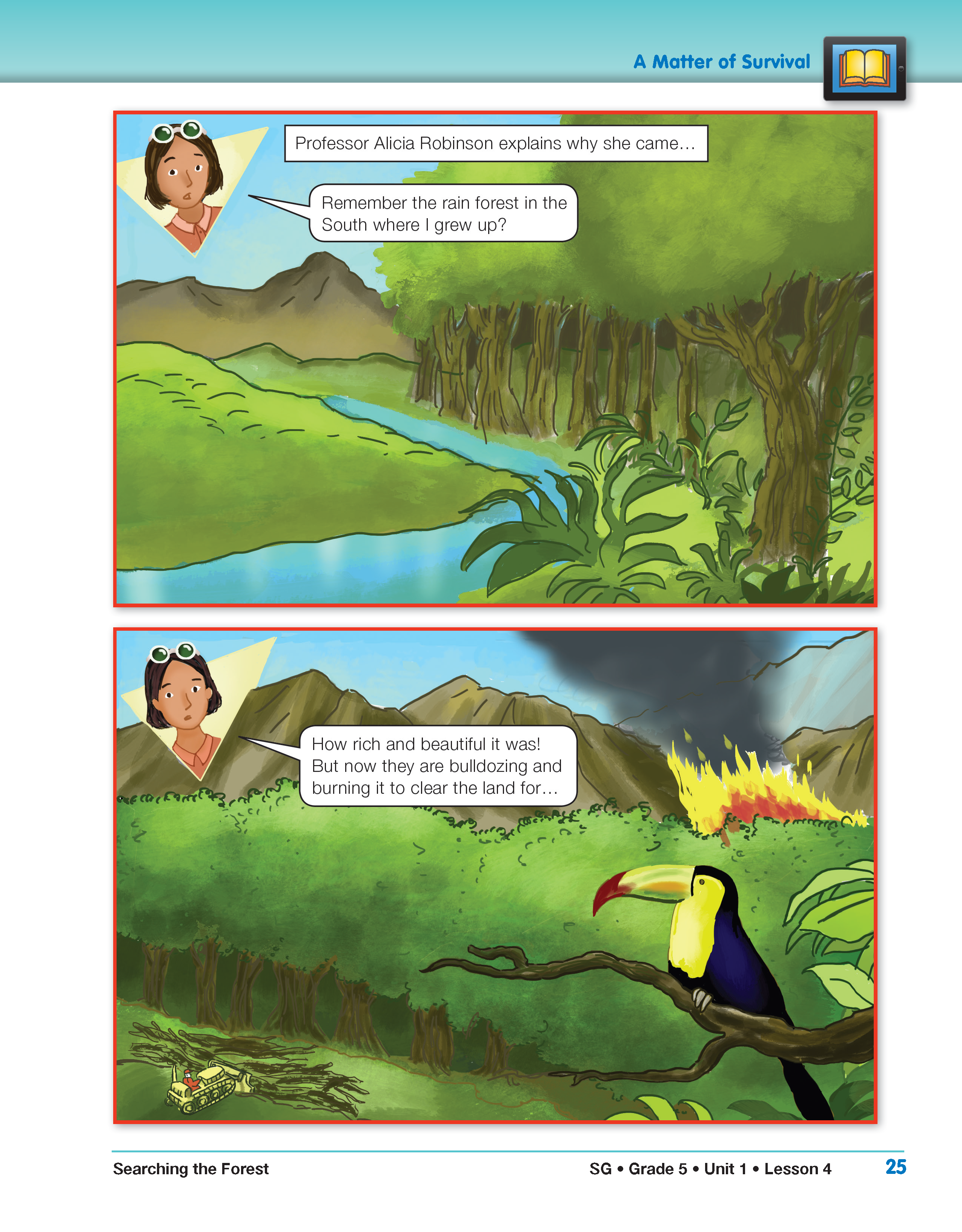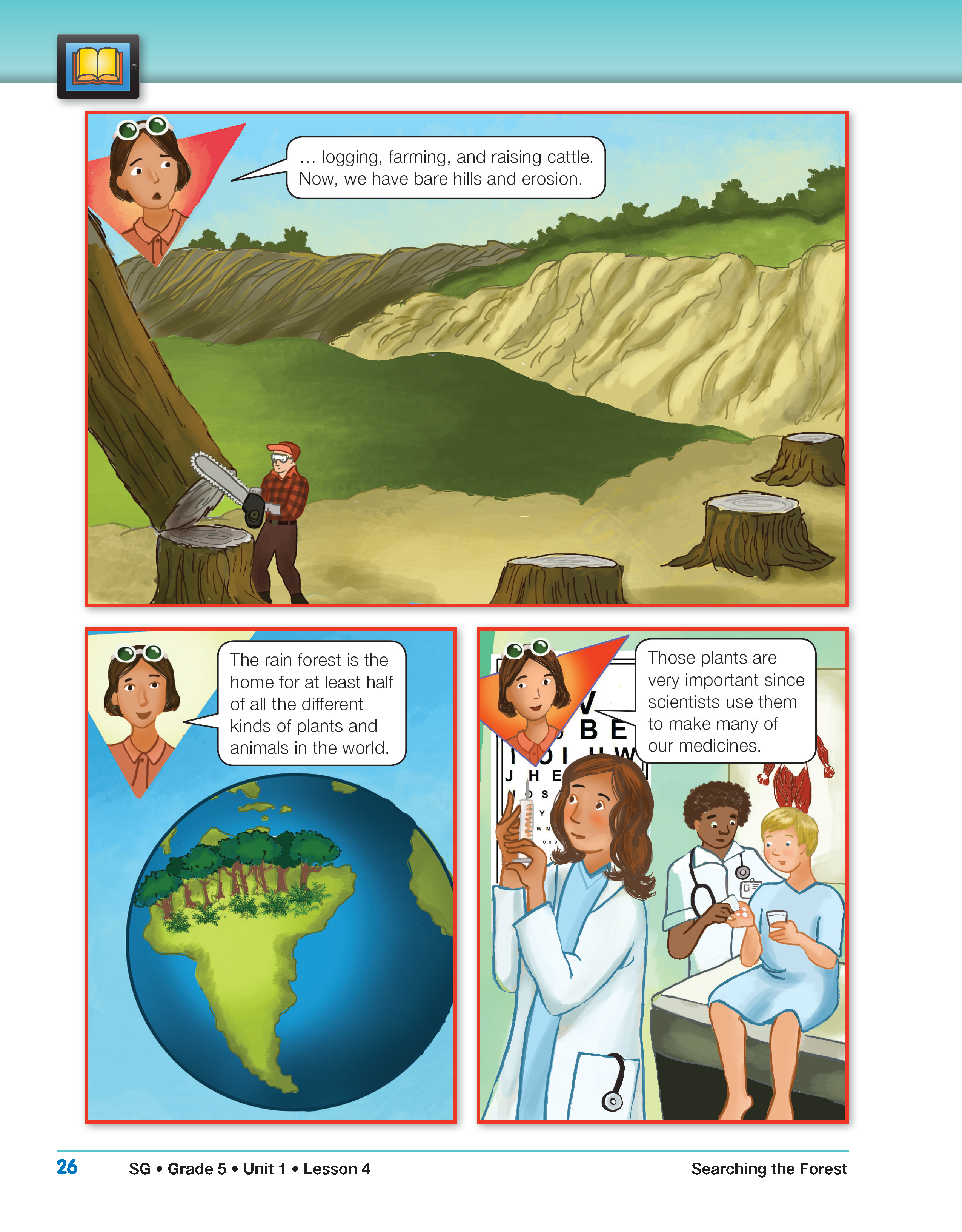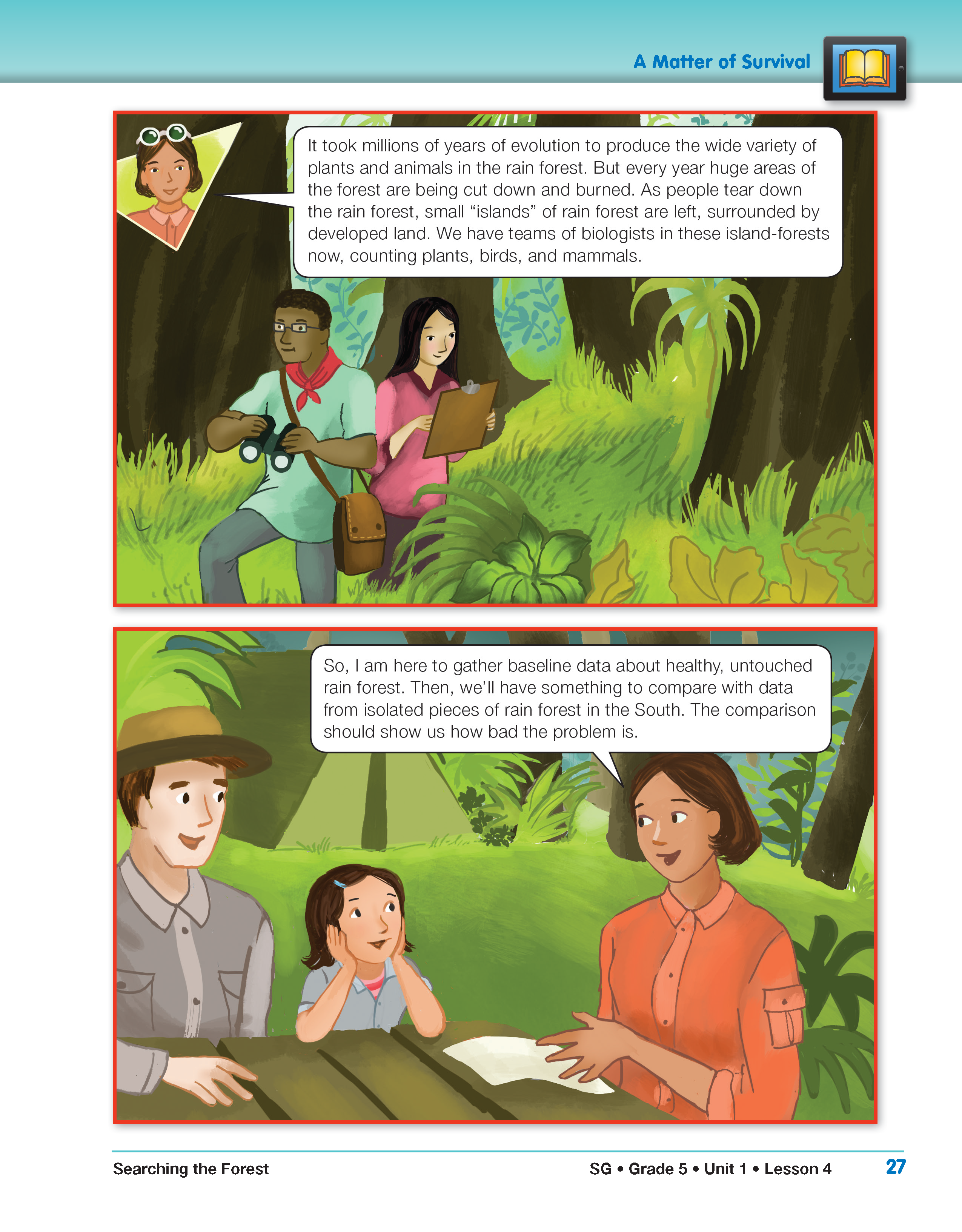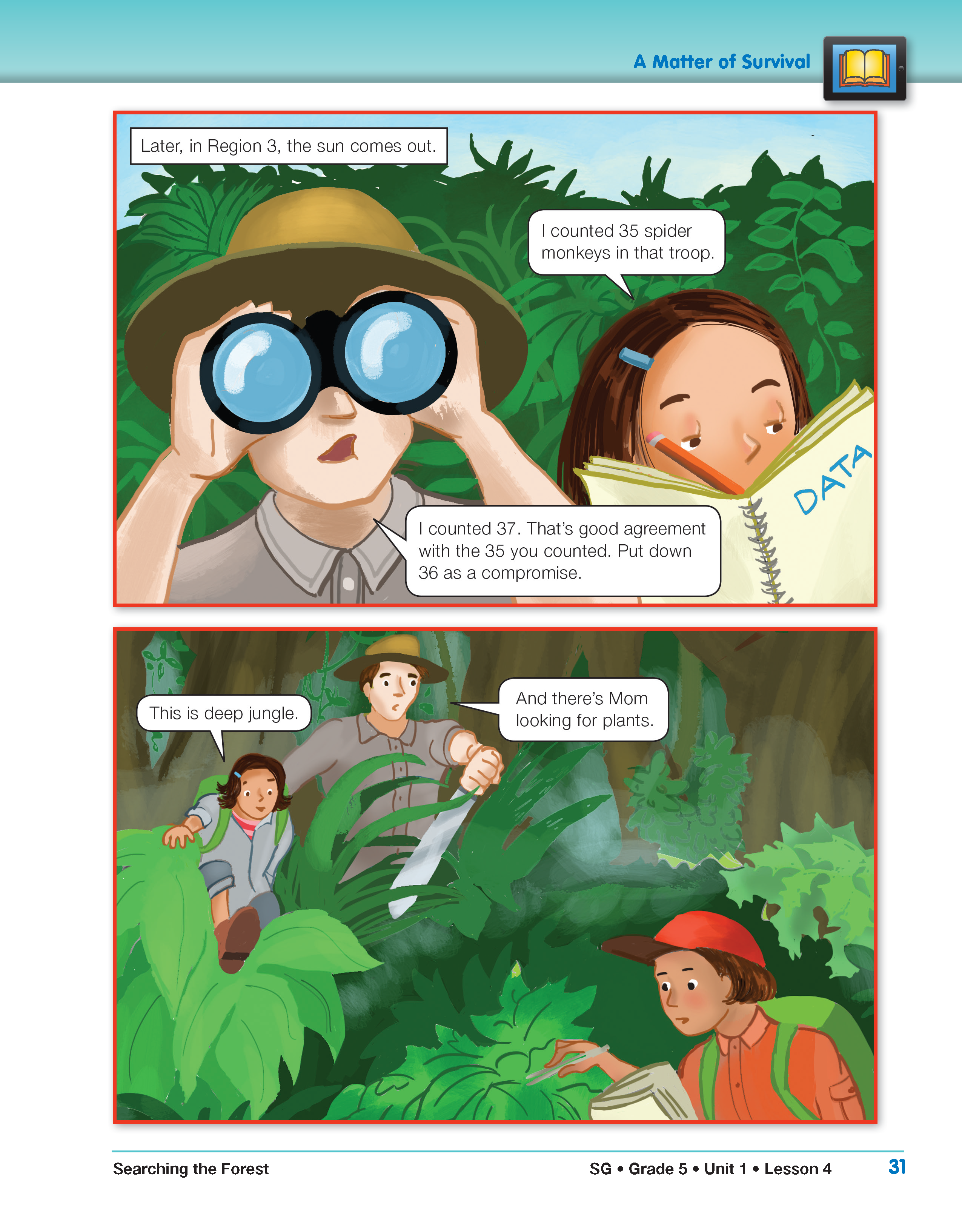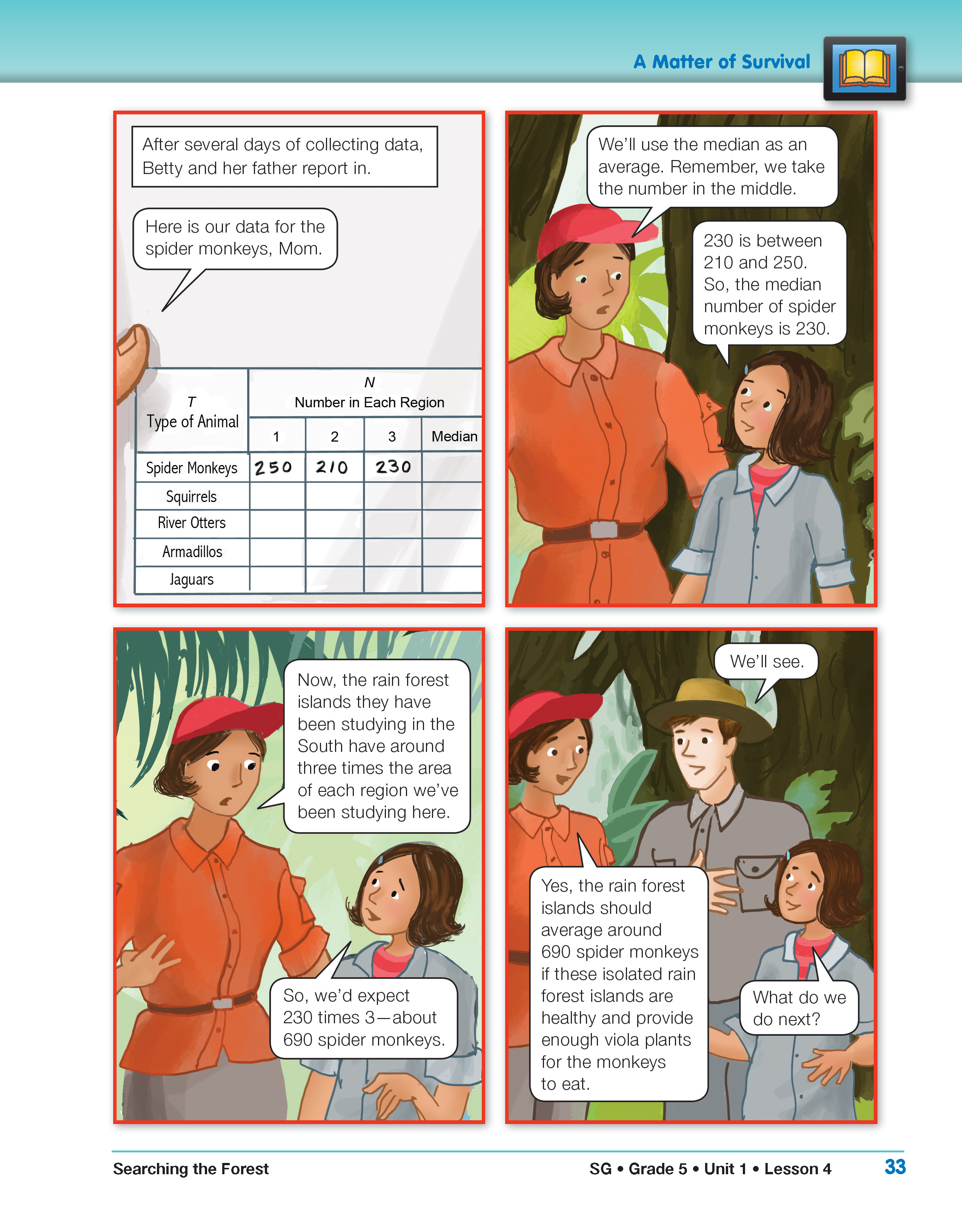To begin this lesson, ask students to share what they know about the Amazon rain forest, recording facts that students share on chart paper or on a display.
As students share, use these or similar prompts to encourage discussion:
- Where is the Amazon rain forest located? (along the Amazon River in South America)
- What kinds of plants and animals might you find in the Amazon rain forest? (Possible response: tropical forests, ferns, tropical flowers, monkeys, parrots, jaguars, poison tree frogs)
- Why is it important to study the rain forests? (Possible response: There are many plants and animals there that are used to produce medicine and food. There are animals there that are becoming extinct.)
Direct students to the Searching the Forest pages in the Student Guide. Explain that they are going to read a story called “A Matter of Survival” about two scientists who are studying the Amazon rain forest. Ask students to think about why this story is titled “A Matter of Survival” as they are reading. Students may read the story independently, in small groups, or as a class. Discussion prompts have been provided and can be used during or after reading.
Page 25
This story portrays the ongoing destruction of the tropical rain forest, including causes and potential impact. Much of the land is being converted to pasture or cropland. One theme of this story is the work scientists are doing to answer a difficult question (how to save the rain forest).
- What are some of the reasons that the rain forest is disappearing? (Possible response: Trees are being cut down or burned to provide farmland for crops and for grazing livestock. They are cutting down the trees for their logs. Land is being cleared to provide places for people to live.)
- Why does the loss of the rain forest matter? (Possible response: The rain forest is the home for at least half of the different kinds of plants and animals in the world. Many of the plants are used to make medicines, chemicals, and other products. Animals and plants that live in the rain forest may become extinct if their habitats are destroyed.)
- How do the changes to the ecosystem take place when rain forest is cleared? (Possible response: As the rain forest is cleared, the land is more likely to erode.)

Loss of rain forest reduces global biodiversity due to the loss of habitat. As the home to a variety of plants and animal species, the rain forest plays a crucial role in the planet's ecology. These species are a current source of medicines and chemicals as well as a potential source of new medicines and chemicals. Animals and plants may become extinct when suitable places to live become too scarce. Although losses of large mammals and other appealing species tend to receive the most publicity, innumerable less notable species are equally threatened, and their loss could be even more devastating.
A large amount of carbon is concentrated in rain forests vegetation. When the forest is burned, this carbon is released into the atmosphere as carbon dioxide. Most scientists believe that the ongoing rapid increases in carbon dioxide and other greenhouse gases in the atmosphere is contributing to gradual climatic change.
Page 28
- Why do scientists estimate wildlife populations instead of simply counting all the animals in a region equal in area to the rain forest islands? (Possible response: It is not practical to count all the wildlife in large regions of the Amazon rain forest.)
- How will the Robinsons estimate the population of the animals they will study? (Possible response: They will take a count of the animals in several small areas of the region and then find the average number of animals for the small sections. They can use the average to estimate the total number of animals in the region.)
- Why do you think it is important that each small, sample region is about the same size? (Possible response: If the sample areas are of different sizes, you would not be able to get an accurate average to estimate the population in the total region.)
Page 31
On these pages, Betty and her father are counting the number of spider monkeys in a single troop. Since there are a number of troops in each region that is studied, the count for the entire region, which appears later in the story is much larger.
- Why do you think Betty's father said they had a good agreement when she counted 35 spider monkeys in the troop and he counted 37? (Possible response: It is difficult to count the monkeys in the trees because they are moving around and not very close. Betty and her father can be reasonably sure that they have a close estimate of the actual number of monkeys in the troop.)
Page 33
- What variables did Betty and her father include on their data table? (Type of Animal (T ) and Number in Each Region (N ))
- What values did they list for type of animal? (spider monkeys, squirrels, river otters, armadillos, and jaguars)
- What other variables could the Robinson's study? (Possible response: Betty's mom is studying types of plants, another variable. They could also study insects or birds.)
- Why did the Robinsons want to find the median number for each species? (Possible response: They are using the median as the average for each kind of animal. They will use the median to make predictions about the number of each type of animal in the region they are studying.)
- When have you used any of the techniques the Robinsons used in their study?
Students who have used Math Trailblazers in Fourth Grade will be familiar with sampling, controlling variables, organizing data in tables, averaging, and making predictions from data.
You may notice that with the sample data for spider monkeys (250, 210, and 230) both the mean and the median are the same number, 230. If you have students who point this out, discuss the fact that the mean and median may sometimes be the same number, but in most cases they are not.















